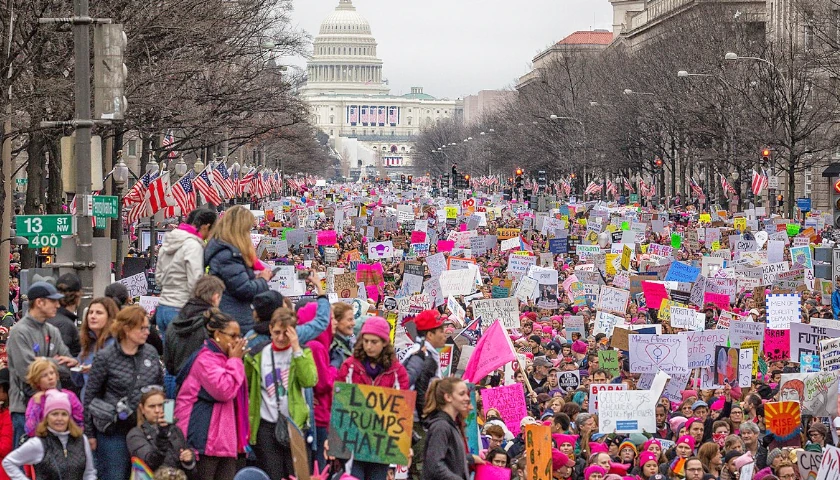by Bethany Blankley
In 2015, when Medicare and Medicaid turned 50, Investors Business Daily pointed out that one was going bankrupt (Medicare), the other was bankrupting states (Medicaid).
In 2015, improper Medicaid payments totaled more than $29 billion, according to the Government Accountability Office.
In 2015, Medicaid accounted for 20 percent of state budget spending. According to new research produced by the Foundation for Government Accountability (FGA), Medicaid spending now accounts for 30 percent of state budgets, skyrocketing to an estimated $603 billion in 2018.
Overall, 47 states’ spending on Medicaid grow as a share of their budgets since 2000, with 32 states spending 25 percent or more of their budgets solely on Medicaid.
“Ultimately, this means fewer dollars are available for education, corrections, transportation, and other important budget priorities,” the report states, pointing to decreased spending in state budgets dedicated to education (by 13 percent) and spending outside of core budget items dropping by 12 percent.
Some states – such as Missouri, Ohio, and Pennsylvania – are spending close to 40 percent of their budgets on Medicaid.
In 2000, Ohio’s Medicaid budget was roughly $7.3 billion, representing about 19 percent of the state’s entire budget, and consistent with the national average. By 2009, spending nearly doubled, climbing to $14 billion and 24 percent of state spending. By 2018, the program costs taxpayers nearly $27 billion per year – more than the state’s entire general revenue in 2000 – and consumes 38 percent of the state budget, the report states.
Ohio’s increase in Medicaid spending equates to a 260 percent increase since 2000.
During the same time period, Louisiana followed a similar trajectory. In 2000, the Pelican State spent $3.4 billion on Medicaid, accounting for roughly one out of every five dollars in the budget. By 2009, that amount doubled to $6.2 billion.
By 2018, after three years of Medicaid expansion under the Affordable Care Act, Louisiana’s Medicaid budget nearly doubled again, surpassing $11 billion per year. By 2019, 35 percent of the state budget is now allocated to Medicaid spending.
In response to criticism of waste, fraud and abuse of the state’s Medicaid program, the states’ Secretary of Health, Rebekah Gee, said, “Over the last four years, Medicaid’s staff has worked hand-in-hand with the legislative auditor’s staff and the Attorney General’s Office to identify the rare cases of misuse or fraud in the program.”
However, Medicaid expansion, the FGA argues, “has blown the lid off of every state and third-party cost and enrollment projection.” It far outpaces state revenue growth in both expansion and non-expansion states.
Over the next decade, Medicaid spending is projected to outpace economic growth, exceeding more than $1 trillion per year, the FGA report states.
“Medicaid has grown at an alarming rate over the past two decades. The larger share of the pie that Medicaid consumes, the less money there is available for other state priorities,” Nicholas Horton, research director at FGA and author of the paper, told The Center Square. “States are watching their Medicaid spending climb to extraordinary levels. Hopefully state leaders will continue to recognize the need to rein in their Medicaid programs and implement commonsense reforms like work requirements and Medicaid expansion enrollment freezes.”
The paper recommends that states implement work requirements for non-disabled adults receiving Medicaid payments.
“Work requirements have proven to be an effective way to move individuals from dependency to self-sufficiency, the report states.
Opponents of work requirements say they needlessly limit access to affordable health care to individuals and families who need it.
“State proposals for Medicaid work requirements will cause many low-income adults to lose health coverage, including people who are working or are unable to work due to mental illness, opioid or other substance use disorders, or serious chronic physical conditions, but who cannot overcome various bureaucratic hurdles to document that they either meet work requirements or qualify for an exemption from them,” the Center on Budget and Policy Priorities argues.
States can also do a better job at reducing fraud, the FGA report says, by ensuring applicant eligibility including verifying income, identity, wages and other records.
More than 500,000 people enrolled in Medicaid through expansion in nine states though their income made them ineligible for the program, the National Bureau of Economic Research (NBER) found.
Co-authored by professors at the University of Kentucky and Georgia State University, the analysis notes that the nine states evaluated represent only 25 percent of the 37 states that expanded their Medicaid programs. The total number of ineligible enrollees is potentially three times higher.
– – –
Bethany Blankley is a contributor to The Center Square.
Photo “HHS HQ” by Sarah Stierch CC4.0.





